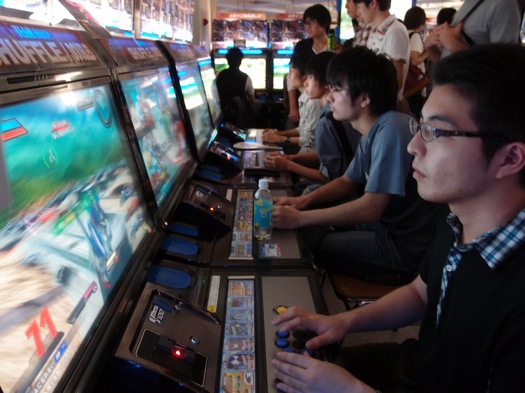
August 3, 2010
Bellagio Museum Symposium: Abstract
Reasons Not to Be Pretty: Symposium on Design, Social Change and the “Museum”
Background
In April 2010, a group of 22 designers, historians, curators, educators and journalists met at the Rockefeller Foundation’s Bellagio Center on Lake Como, in Italy, to discuss the museum’s potential role in relation to design for social change. Organized by William Drenttel, director of Winterhouse Institute and editorial director of the Design Observer Group, and Julie Lasky, editor of Change Observer, the conference focused on the observation that while scores of museums around the world celebrate contemporary design and architecture — highlighting the skill that goes into making functional objects, and their impact on daily life — few museums are focused on design and social change. And the issues around archiving, collecting and exhibiting design of social change is new territory for most museums.
Participants came from Brazil, Denmark, France, India, Israel, Mexico, The Netherlands, South
Africa, U.K. and U.S., and represented diverse design institutions and professions. These included museums (Cooper-Hewitt National Design Museum in New York, Design Museum in London, Design Museum Holon in Israel, Museum of Modern Art in New York, and Walker Art Center in Minneapolis); educational institutions (Royal College of Art in London, Parsons School of Design in New York, National Institute of Design in India); biennials, conferences and awards programs (Brazilian Design Biennial in São Paulo, Design Indaba in Cape Town, Index: Awards in Copenhagen, Prince Claus Fund for Culture and Development in Amsterdam); as well as design writers, independent curators and thinkers from the developed and the developing world.
Challenge
While a number of highly successful exhibitions have been mounted on the theme of design and social change — such as the Cooper-Hewitt National Design Museum’s “Design for the Other 90%” in 2007 and the Museum of Modern Art’s “Design and the Elastic Mind” in 2008 — a general lack of attention to this subject is regarded as a missed opportunity to educate audiences through museum venues about contemporary social themes and issues, and further to promote understanding of design as a means of social innovation and change.
Participants were asked to consider how museums might be used more effectively as agents of social change, as well as how to encourage future collaboration among this group of design professionals. Underpinning the discussions were the questions: what is unique about the ways museums can display and archive the artifacts of social design and communicate their value to diverse audiences? What should a museum do, and be, in the 21st century?
Conclusions
Although the conversations at Bellagio were open-ended, the symposium generated concrete ideas and the organizers developed numerous conclusions:
1. The museum can be a collective commons for learning, reflection and critical action, as well as a platform for delivering information and provocation and a stage for learning, social connectedness and critical action. The museum as commons is not only an exhibition space but also a civic arena where people can reflect on the importance and efficacy of social change.
2. Museums need to move beyond the object so that social design exhibitions are more than concrete displays. In that sense, design should be regarded as a tool for improving life and fostering participatory engagement and social activism.
3. Museums should be a place where “wicked,” or seemingly intractable social problems of global scope, are addressed — a shared space in which diverse stakeholders can participate in solutions.
4. The curator’s role may have to evolve and broaden to include skills germane to the complexity of issues around social change and innovation.
5. Traditional museums can learn from other institutions and organizations that champion design as an agent of social change by stimulating, honoring and publicizing specific achievements on an international platform.
Summary of Discussion and Themes
1. Storytelling: Creative Approaches to Exhibiting Design and Social Change
Participants were asked to define the characteristics of compelling presentations on design and social change and to provide examples of outstanding models from the past or ideas for the future. These ranged from an exhibition in Brazil in which 20 young people researched and presented design solutions in everyday life, to MoMA curator Paola Antonelli’s dream exhibition called “A History of Violence,” showing what happens when good design goes bad.
2. Context: Adapting the Message of Social Change to Multiple Venues and Platforms
Where, ideally, should social design exhibitions be presented? Participants discussed the relative merits of events within and outside museums, including venues such as the bare 50,000-square foot shed that housed the City Eco Lab at the 2008 Saint-Etienne Design Biennale in France, or an HIV-awareness campaign in an Indian city’s red light district that was akin to street theater.
3. Form: Acquiring and Preserving the Artifacts of Social Change
If the main emphasis in social design exhibitions is on narrative and process, should social-design artifacts be collected, and if so, how? Some participants argued that acquiring objects burns through resources better spent by a museum’s education department, while others noted that when you archive and document something you evaluate it, and that process is very important. But then the question arose: what exactly is an object of social change?
4. Content: Key Issues and Themes for Future Exhibitions and Platforms
In content workshops, participants focused on storytelling and on context. Moderator Allan Chochinov asked each group to devise “recipes” for ideal social design exhibitions.
Observed
View all
Observed
By Ernest Beck
Recent Posts
A quieter place: Sound designer Eddie Gandelman on composing a future that allows us to hear ourselves think It’s Not Easy Bein’ Green: ‘Wicked’ spells for struggle and solidarity Making Space: Jon M. Chu on Designing Your Own Path Runway modeler: Airport architect Sameedha Mahajan on sending ever-more people skyward
 Ernest Beck is a New York-based freelance writer and editor.
Ernest Beck is a New York-based freelance writer and editor.


